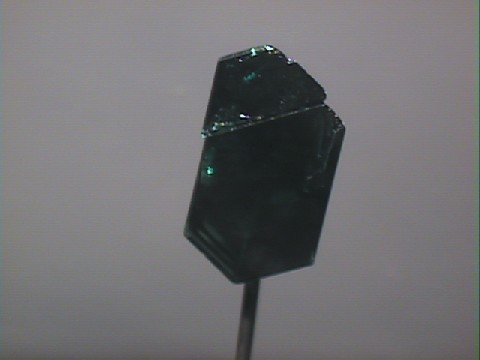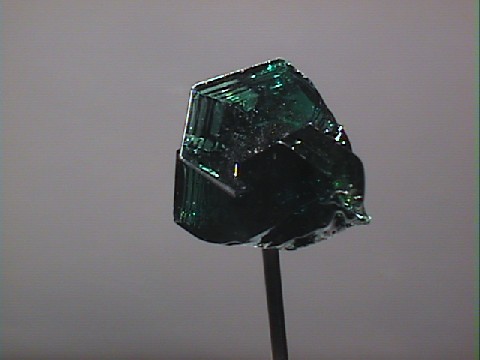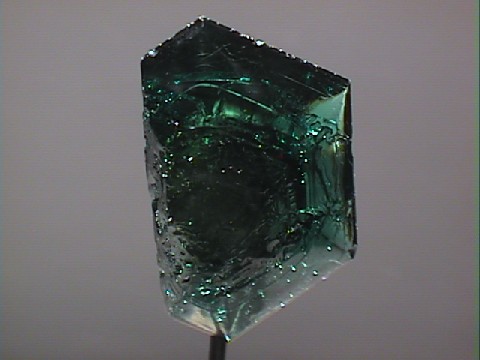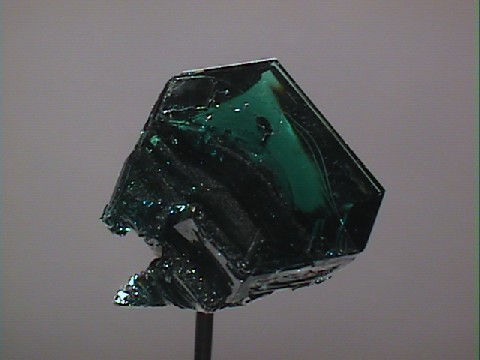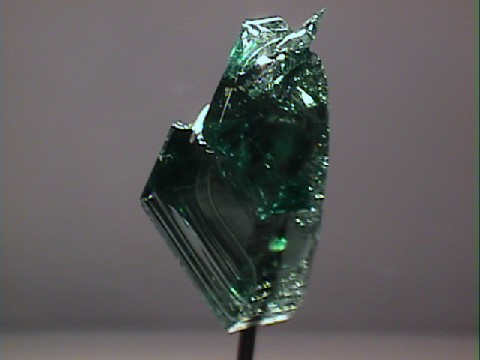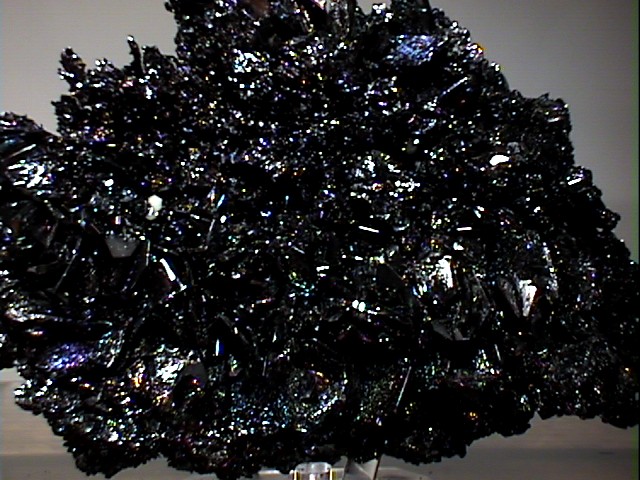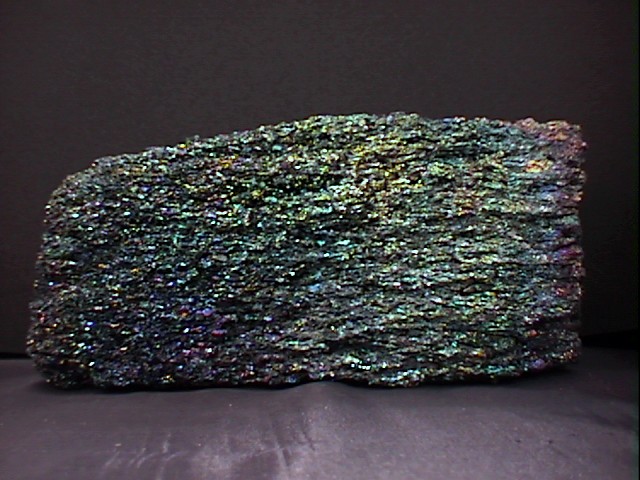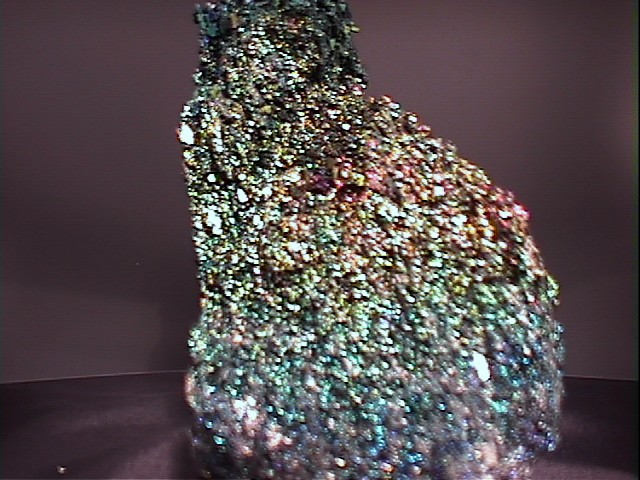|
| For Moissanite Jewelry, see --> |
Moissanite is a mineral that was first discovered in fragments of the meteorite at Diablo Canyon or Meteor Crater in Arizona. It was named in honor of its discoverer, Nobel Prize winner Dr. Ferdinand Henri Moissan. Synthetic moissanite is also known as silicon carbide after its chemistry and by the trade name, carborundum. In the meteoritic material, moissanite is associated with tiny diamonds. Moissanite is also the trade name being used for new synthetic SiC gemstones.
Moissanite grown in laboratories is now being cut as gemstones and they are used as diamond simulants. Moissanite brings to the jeweler's table a similar index of refraction and better than twice the fire of diamond, but is only slightly less expensive due to the difficulty in growing the crystals. Moissanite is causing quite a stir in the jewelry markets.
As a diamond simulant, artificial moissanite is very hard to differentiate from diamond and can fool many gemologists. It does have many similarities. It is very hard at 9.25 (diamond is 10) and it is highly refractive with an index of refraction of 2.6 - 2.7 (diamond's IR is slightly lower at 2.42). Most important, moissanite and diamond are thermally conductive unlike other diamond simulants and unfortunately it is this property that is primarily used as the test for the authenticity of real diamonds. Differences however are clear and other tests can be used to differentiate the two. First of all, moissanite is hexagonal, not isometric and therefore it is doubly refractive unlike diamond. A through-the-face examination of a moissanite gemstone should show double facet edges whereas a diamond's edges are single in appearance. Moissanite is also slightly less dense than diamond and is rarely perfectly clear of color, having pale shades of green. Natural flaws are absent in moissanite, replaced instead by tiny, unnatural, white, ribbon-like structures that are a result of the growing process. The synthetic SiC known as carborundum has seen many uses in high tech ceramics, electrical components, abrasives, ball bearings, semi-conductors, extremely hard saws and armor.
Natural moissanite is very rare and is limited to iron-nickel meteorites and a few other rare ultramafic igneous occurrences. Initially there were skeptics to the original meteorite findings and were attributed to the silicon carbide blades that may have been used to saw the type specimens. But this has been disputed because Dr Henri Moissan did not use silicon carbide blades to prepare the samples.
Moissanite can be a bi-product of the blast-furnace process used to make iron. In a blast furnace, the raw ingredients such as iron ore, carbon (usually in the form of coke, but other forms such as methane may be used), limestone and other chemicals and air (used to react with impurities) are continuously introduced. The reaction results in the production of pig iron which is removed as a liquid while the impurities form a slag which floats to the top and is removed. The sides of the huge furnace are relatively cool, while the interior is very hot, and this creates conditions for minerals to crystallize. Every few months, the furnace is emptied so that these minerals can be cleaned from the walls of the furnace. One such mineral is moissanite, which readily crystallizes from the silicon and carbon dissolved in the molten iron. The resulting moissanite crystals are nearly black and opaque due to their iron content, but they can be quite colorful and beautiful, although most are ground up and used as abrasives.
There are several phases of SiC. The original mineral discovered is officially known as moissanite-6H. The (6H) refers to the hexagonal symmetry of this phase of moissanite. There are two other phases recognized as minerals: moissanite-5H and the isometric phase beta-moissanite.
Moissanite is classified as an element despite the fact that in chemical reality it is a compound!
The reason for this is that the elemental bonds that exist between carbon and silicon are very similar to the carbon-carbon bonds of other elemental minerals such as diamond.
There also is just no other mineral class that moissanite could fit in better than the
Native Elements Class!
Moissanite in fact is sometimes placed into the
PHYSICAL CHARACTERISTICS:
- Color is green (although it may be nearly colorless to essentially black).
- Luster is adamantine.
- Transparency: Crystals are transparent to translucent.
- Crystal System is hexagonal, trigonal and isometric.
- Crystal Habits include tiny six-sided plates and grains in meteorites.
- Hardness is 9.25
- Specific Gravity is 3.1 - 3.2 (average)
- Streak is white.
- Other Characteristics: Index of refraction is 2.6 - 2.7, crystals are thermally conductive and highly double refractive.
- Associated Minerals include iron meteorites and olivine.
- Notable Occurrences include Diablo Canyon or Meteor Crater in Arizona and as a trace in several kimberlite deposits and placer deposits eroded from them.
- Best Field Indicator is crystal habit, color, index of refraction, double refraction, density, thermal conductivity and especially hardness.



